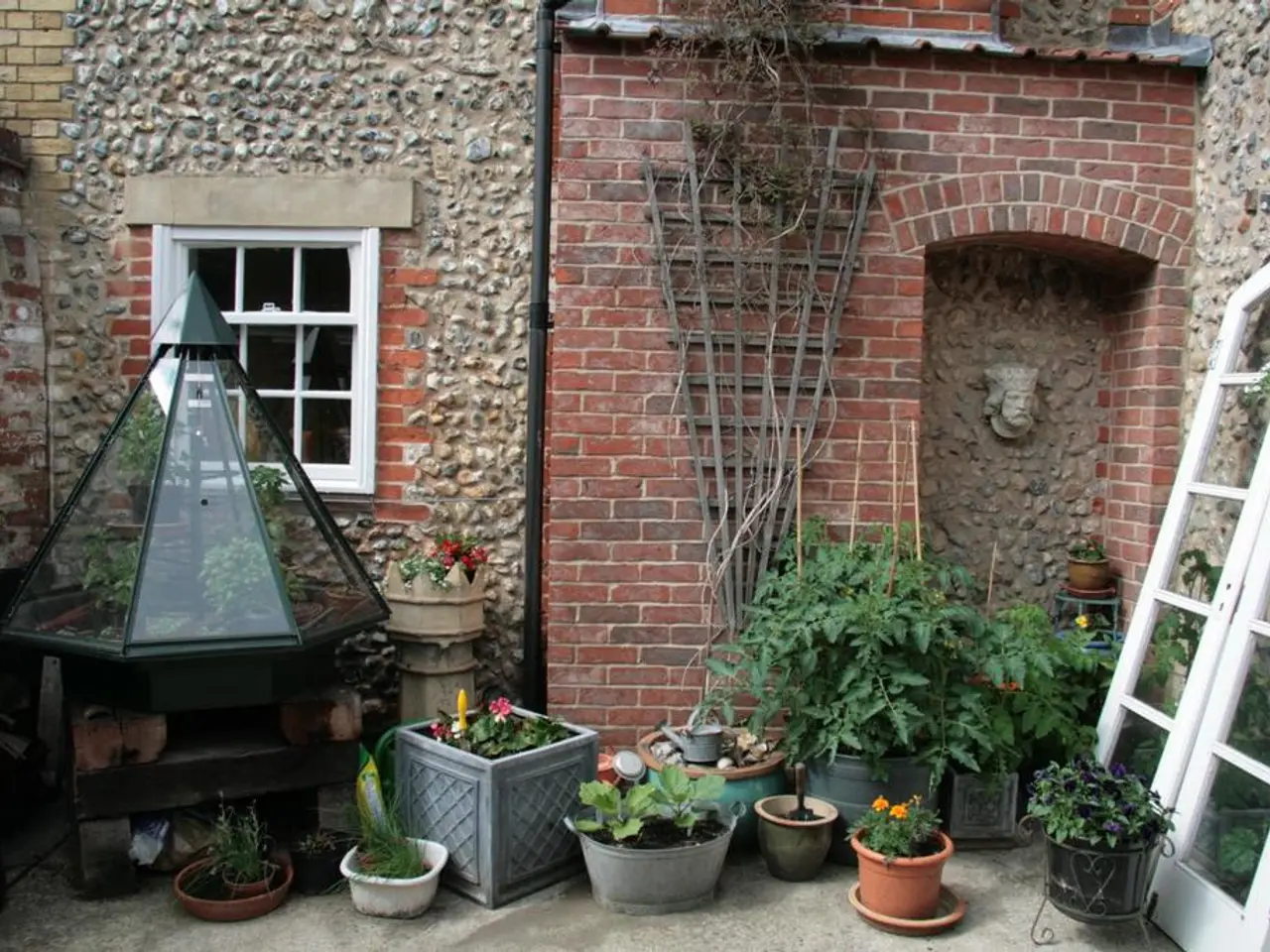Maintaining Basil's Vitality: Verified Strategies for Thriving Basil Plants
Basil, a tender herb known for its aromatic properties, can wilt easily after being plucked from the garden or brought home from the market. To ensure that your basil remains fresh and flavorful, follow these tips for short-term and long-term storage, as well as advice on caring for your basil plants.
Short-term storage (a few days):
For a few days, you can store basil like fresh flowers. Place the stems in a glass of water, similar to a bouquet, and cover loosely with a plastic bag. Store at around 40°F - 70°F (4°C - 21°C) to maintain humidity and prevent wilting. Alternatively, wrap basil stems snugly in a damp paper towel and put it in a breathable container or plastic bag in the fridge. The dampness provides balanced humidity without causing slime.
Long-term storage:
For prolonged use, consider freezing or preserving in oil. Freezing basil leaves or leaving them whole preserves the flavor well but can alter texture, best used for cooked dishes. To preserve basil in oil, layer clean, dry basil leaves with oil (avocado oil preferred) in a glass jar, adding a pinch of salt, and keep refrigerated. This keeps the basil usable and also produces basil-infused oil. Another effective technique is to freeze basil, either as whole leaves or blended with olive oil into ready-to-use cubes.
Drying basil stems tied in bunches and hung upside down in low humidity conditions or using a dehydrator retains flavor, though with some aroma loss. However, basil essential oils and ascorbic acid treatments have shown potential to enhance antioxidant capacity and microbial safety during storage, but these are experimental preservation methods with commercial viability still under study.
Caring for Basil Plants:
Basil thrives in well-draining soil that has a neutral to slightly acidic pH of 6.0-7.5. Place your basil in an area with 6-8 hours of sunlight daily for optimal growth. Pruning basil plants encourages healthy new growth and maintains the plant's shape. Pruning should be done when the basil plant has at least six leaves and should not remove more than one-third of the plant at a time to prevent shock.
When watering basil, the soil should stay evenly moist, with the top inch feeling dry indicating it's time to water. To keep basil fresh and bright green at room temperature, store it like a bouquet in a jar of water with a plastic bag covering the leaves.
Pest and Disease Management:
Common basil ailments include fungal infections, pests, and nutrient deficiencies. When dealing with pests like flea beetles, remove and destroy affected plants, and use organic pest control methods. Introducing beneficial insects such as ladybugs can help control pests on basil plants. To prevent fungal diseases, avoid overwatering, ensure good drainage and air circulation, and sanitize tools and pots.
Glen, a gardening expert with over 15 years of experience in garden maintenance, design, and landscaping services, provides valuable insights on basil care and preservation. His latest posts include articles on garden fungicides, candy cane peppers, and watermelon.
Remember, basil should be stored at room temperature for short-term use or treated like cut flowers, with the stems placed in a jar of water on the countertop. Never store fresh basil at temperatures below 39°F to prevent damage to the delicate leaves. Harvesting basil in the morning when the plant's oil content is at its peak preserves its freshness and flavor. Basil leaves should be harvested above the leaf nodes to encourage continuous growth.
By following these guidelines, you can enjoy the fresh flavor of basil for longer periods and grow healthy basil plants in your garden.
Read also:
- Man has stored his affordably purchased Lamborghini Miura, worth an initial $10,000, in his living room for four decades, now boasting a value surpassing that of his home.
- Organic Eco Mattress for Children: Impressive Safety and Quality for Your Little One
- Music, Food, and Holiday Atmosphere at Castle Summer Castle Dyck from August 8-10
- Museum-based Family Celebration: Amusement and Exploration at Artistic Venues




